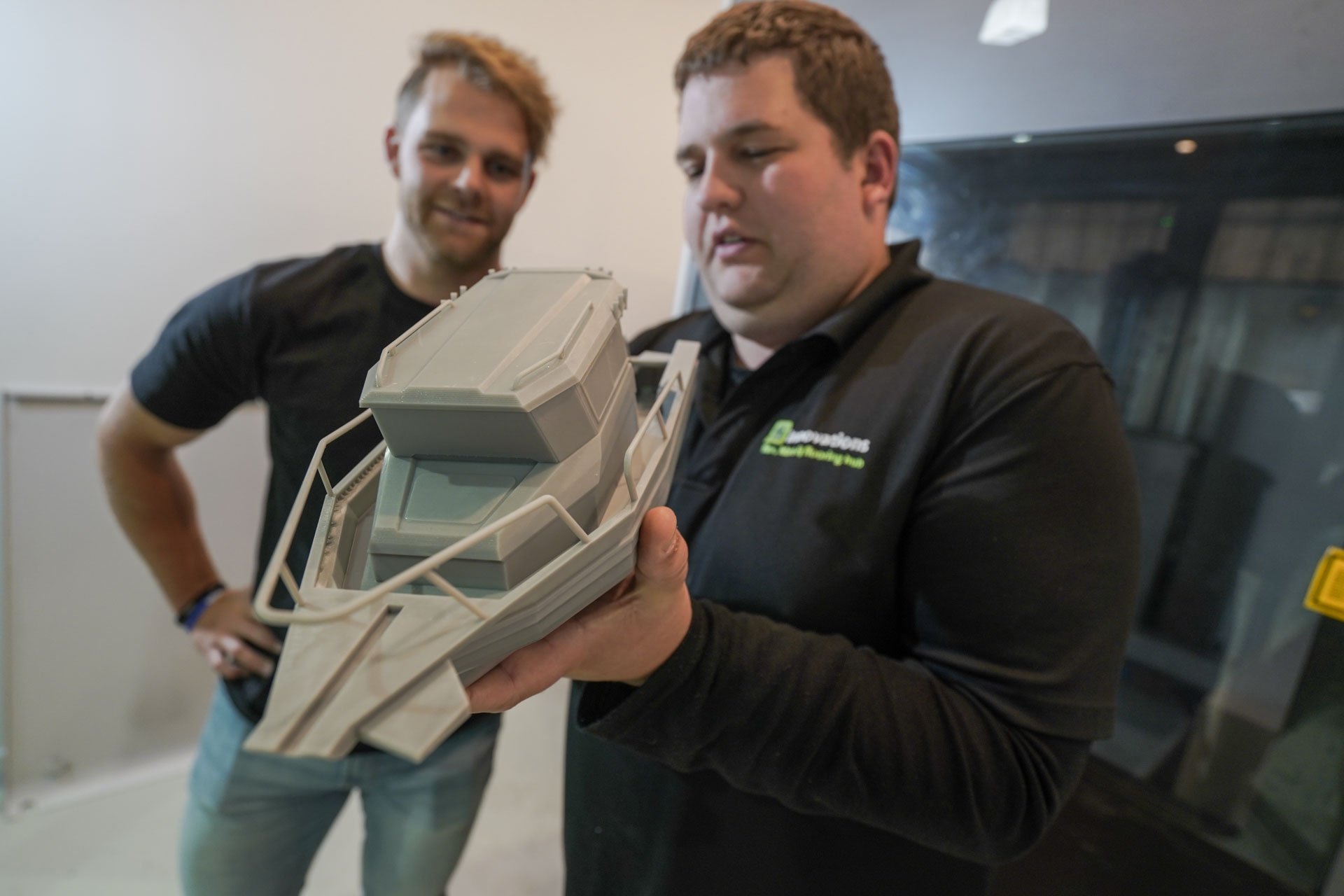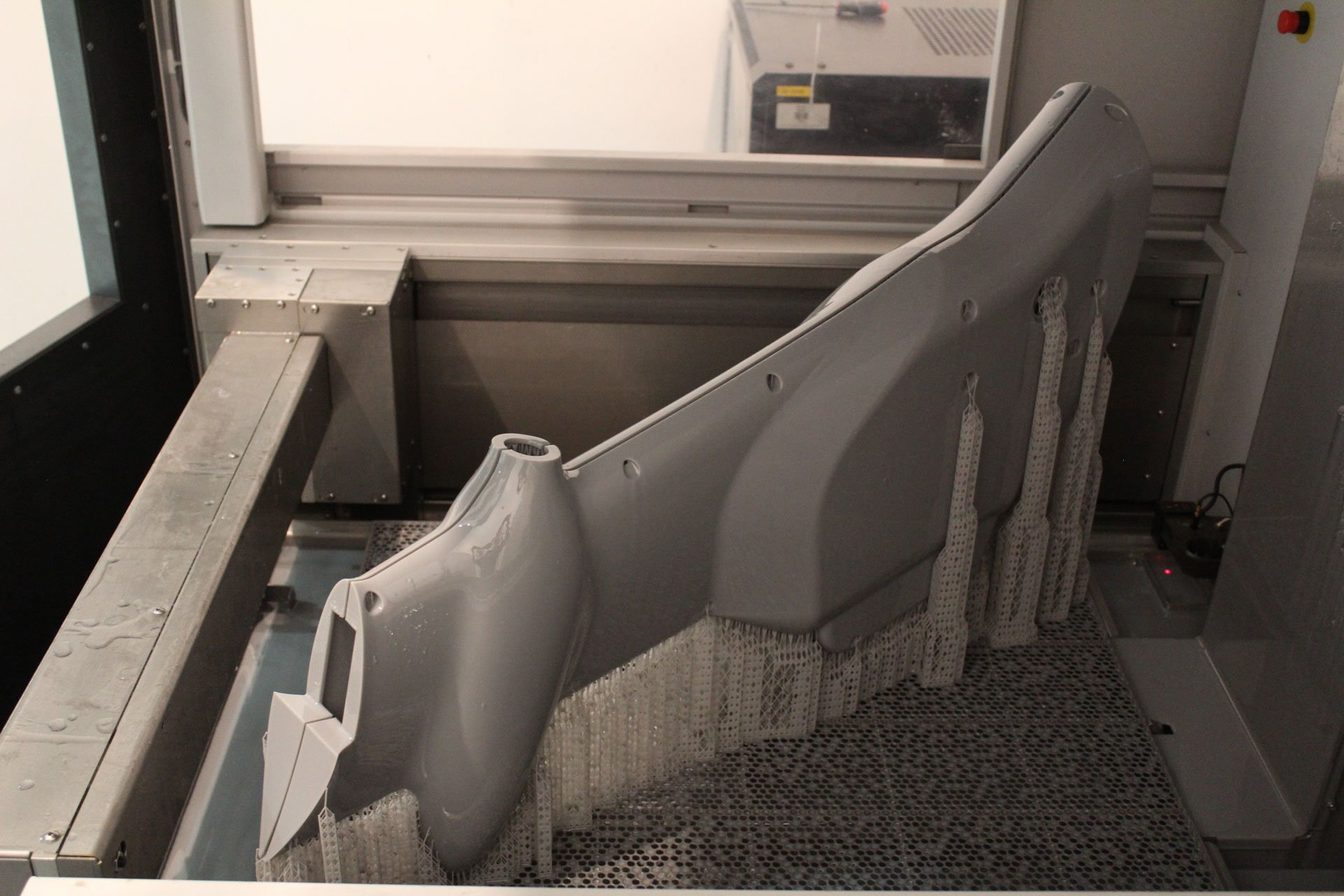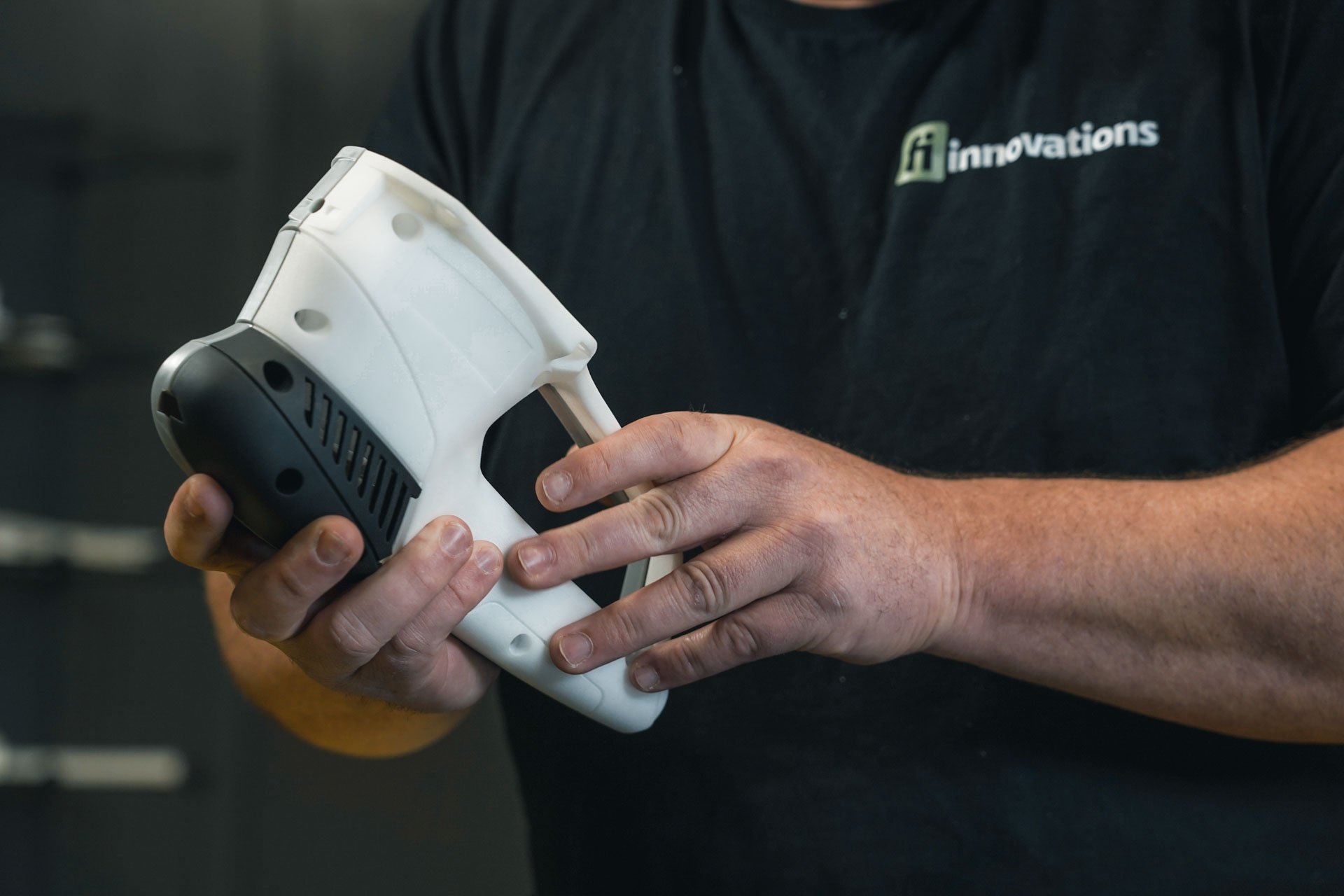
Stereolithography
[sla]

Detail in Every Dimension: Where Innovation Meets Artistry
Accelerate production times, enhance the quality of parts, and reduce waste with Metal 3D Printing in industries ranging from aerospace to medical, automotive to dental.
Much like the Selective Laser Sintering (SLS) machine, the Stereolithography (SLA) operates by using a laser to trace out a path, while also curing along the way, to create a solid shape from liquid material, one layer at a time. The shape of a part is determined by a digital file which is made using Computer-Aided Design (CAD), and is then sent to the SLA for printing.
It has become an incredibly popular form of additive manufacturing technology thanks to its ability to produce highly accurate, isotropic, and watertight prototypes and parts from a myriad of different materials. The finish is also particularly smooth, which reduces the need for extensive post-processing. It’s also renowned for its high resolution and accuracy, impressively sharp details, and all-round versatility.
The SLA Machine.
The largest machine in New Zealand, the ProX® 800 delivers part accuracy and surface quality achievable only with Stereolithography (SLA) additive manufacturing technology. Immediately produce low- to medium-run parts at a lower per-unit cost, and build massive, highly detailed pieces faster.
The ProX® 800 Polymer 3D Printer
by 3D Systems
750mm x 650mm x 550mm Capacity
-
ACCURA XTREME AND ACCURA CLEARVUE MATERIALS POLYMERS
This machine is suitable for high-quality, detailed medium to large functional prototypes, clear parts, and investment casting masters.
DOWNLOAD DATA SHEETS >>>>




From Prototyping to Production.
Elevate the standard of your 3D prints with our finishing options. Although 3D printing technology constructs objects layer-by-layer, this process can sometimes lead to a slightly coarse surface.
Finishing not only eradicates the layered appearance but also significantly enhances the exterior surface of your end-use parts. Regardless of whether you're prototyping or producing, these finishes can render your part a smooth surface, remarkably similar to parts produced using traditional injection molding.
The choice of the right 3D printing finish, however, depends on various factors. These include compatibility with materials, durability for different use-cases, and of course, the cost.
>>>>

If you can dream it
we can make it.
At Fi Additive, we turn challenges into opportunities for innovation.
Our team has deep technical expertise and unique problem-solving capabilities to transform visions into tangible realities. If you have a tailor-made manufacturing job or a complex project that demands a hands on approach, we’ll work with you to ensure it’s a success.
Discuss your project with the team today





